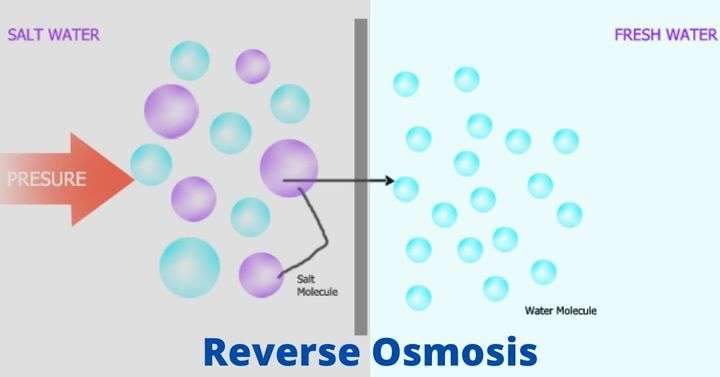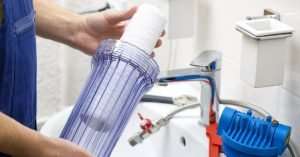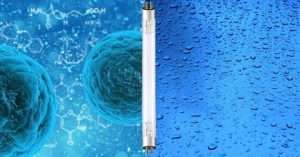It is essential to have a water purifier installed in every home due to increasing pollution levels and other diseases in our water supply. Water purifiers provide clean, pure water for drinking. There are many ways to purify water, and RO Water Purifier is one of the most popular and advanced technologies. Reverse Osmosis is the full name of RO. Today’s article will explain RO, how it works, and any other relevant information. After reading, you will find all your questions about RO answered in one place. Let’s get started without delay.
What is RO?
Reverse Osmosis is the full name of RO and it is a water purification process. RO membranes are used in this technology to purify water. An RO membrane is a thin membrane that looks like cloth and has very small holes. This filter removes very tiny viruses, bacteria, and germs from the water. The membrane also removes any toxic chemicals from the water.
Reverse Osmosis can remove 99% of contaminants from the water. The RO membrane is able to separate contaminants based on their size and charges. An RO system can’t remove all bacteria and viruses. The RO system can remove maximum contaminants, but not all.
Is RO water purifier safe?
RO water purifier has some pros & cons. Let’s first discuss its pros. It’s a physical separation process & it can remove all types of contaminants from the water and give us highly purified water.
When we think about cons, it can also remove good minerals from the water. This water doesn’t quench your thirst. Some diseases, such as decreased bone density and weak bones, can be caused by long-term drinking. Water pH also drops, resulting in a bitter taste.
Advantages & Disadvantage of RO
Advantages of RO water Purifier
- RO removing 99% of harmful bacteria and viruses present in the water, it eliminates them completely.
- It converts hard water into soft water.
- It is easy to use.
- RO removes toxic substances present in water such as heavy metals, salts, mercury, fluoride, arsenic, chlorine etc.
- It provides you a safe drinking water.
RO water purifier disadvantages
- RO water purifier removes the impurities dissolved in water as well as the natural minerals present in it like iron, magnesium, calcium and sodium which are essential for the human body.
- unable to remove 100% bacteria and viruses from the water. you need to secondary treatment for kill all bacteria and viruses.
- The taste of water changes – When the natural minerals are removed from the water
- RO water purifier takes more time to purify water.
- Waste water flows more than filter out water
- It is more expensive than other purifiers. UV and RO water purifiers consume more electricity.
How does RO work?
A high-pressure pump is employed to perform Reverse Osmosis. This pump’s pressure is applied to the impure water, and then the water is then passed by its RO membrane. Due to the tiny holes present in the membrane, water molecules can easily pass through, and harmful substances like salt (ions), bacteria or viruses within the liquid that are more than the holes on the membrane are identified from the rejected stream.
The pressure that is applied to impure water is based on the ions within the fluid and the concentration of these ions. The more concentrated is the water is, the greater pressure will be needed to get rid of Osmotic pressure.
The water flow carries concentrations of contaminants that cannot travel RO membranes. RO membrane is referred to as”reject Stream”.
Difference between RO UV UF water purifiers
| Sl No | RO | UV | UF |
| 1. | Electricity is required to purify the water. | Electricity is required for purifying water. | It doesn’t require electricity. |
| 2. | It can work by utilizing high-pressure water. | It operates at normal water pressure. | It can work with any pressure in the water. |
| 3. | It can remove germs from the water. | It kills bacteria but does not remove them. | It filters out germs. |
| 4. | It removes salts and toxic metals that dissolve in water. | It doesn’t remove toxic metals that are present in the water. | It does not also dissociate dissolved salts from metals. |
How can we determine what type of water purifier require?
Before purchasing a water purifier, consider some essential aspects, including the source of the water you drink, the nature of the contamination, the TDS value, etc. Let’s find out what kind of water purifier will be suitable for your home.
The first step is to get the TDS test for your water at home. If you don’t know how to conduct this test and its significance, there’s no reason to worry, and I’ll provide more information about it.
If there’s an industry in your region, you should take a chemical test to identify the chemical impurities present within the drinking water.
If you are still in question, you can read an article, water purifier buying guide step by step.




